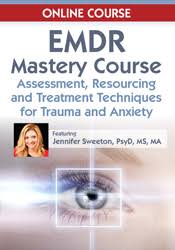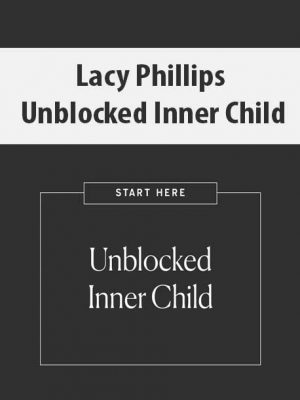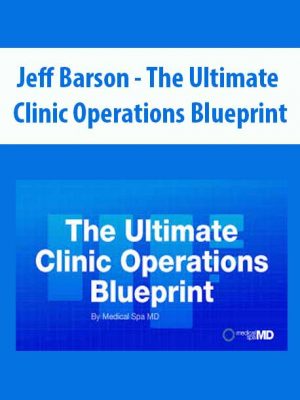EMDR Mastery Course: Assessment, Resourcing and Treatment Techniques for Trauma and Anxiety – Jennifer Sweeton
$299.00 Original price was: $299.00.$85.00Current price is: $85.00.
Proof of item:
EMDR has helped thousands of clients reclaim their lives, quickly and consistently helping them find relief from the trauma and anxiety that plague them.
But without guidance and hands-on practice, you’re unable to bring this groundbreaking evidence-based treatment to your clients who so desperately need it.
In this comprehensive training course, you’ll learn effective strategies to transform traumatic memories and anxious feelings — so your clients feel less in-danger and distressed, and more hopeful for the future.
Internationally-recognized expert, Dr. Jennifer Sweeton, will help you transform your clients’ lives by sharing step-by-step instructions, expert tips for each phase of treatment, and helpful video demonstrations so you can start applying EMDR techniques in your practice right away.
What You’ll Learn…
In these 6 comprehensive video modules, you’ll learn how to use brain-based techniques to change your clients’ traumatic memories and help them feel safe again — preventing them from ending therapy early and bringing them faster healing from trauma and anxiety.
Module 1 :
The Neuroscience of Trauma and Anxiety: Healing Trauma by Treating the “Disease of Memory”
- Why relaxation may actually be a trauma trigger for your clients and how to make relaxation feel safe again
- How EMDR targets the 5 major brain areas affected by trauma and guides each one in the direction of health
- Which assessment tools are most effective for evaluating and tracking trauma symptoms, ranging from 4-question screeners to the most comprehensive “gold standard”
- The unexpected trauma symptoms that many therapists misdiagnose, causing them to choose treatments that don’t fit their client’s needs
Module 2 :
Mechanisms of EMDR: How Healing Attachment and Targeted Brain Change Lead to Rapid Recovery
- Why building a strong therapeutic alliance is the single most important technique/approach you’ll use with your clients
- How to activate your clients’ mirror neurons to help them connect in therapy and build attunement quickly (with a video demonstration)
- The 6 Laws of Brain Change, and how each phase of EMDR leverages these to deliver faster progress
- Why PTSD is really a disease of memory, and how to make traumatic memories feel less dangerous, less distressing, and more in the past
Module 3 :
Practical EMDR Techniques: Moving Clients from Surviving to Thriving
- The biggest mistake most clinicians make in applying EMDR, and how to prevent your clients from experiencing more distress than they can handle
- How to talk with your clients about EMDR in easy-to-understand language that connects with their biggest concerns
- How to be certain you’re focusing on the right target from the start… even if your client comes in with a laundry list of different concerns
- The biggest challenge in EMDR… This is something that even veteran clinicians practicing EMDR for over 20 years still struggle with regularly
Module 4 :
Preparation & Resourcing – Tools, Skills, and Resources to Manage Distress Confidently
- 15+ effective coping skills and reliable resources to help your clients stabilize when they’re feeling overwhelmed
- Why clients say deep breathing doesn’t work for them and how to make it a vital part of their toolbox
- Why you should start with your client’s most distressing “touchstone memory” first instead of graded exposure (and how to start here without them feeling too distressed)
- How simply using the process of checking in on distress levels can lead your clients to less guilt, blame, and shame
Module 5 :
Eye Movements & More: Using Bilateral Stimulation to Put Distressing Memories in Their Place
- Beyond eye movements — 5 other techniques you can combine to build whole-brain communication, making traumatic memories feel less vivid and distressing
- How to effectively prepare your client and strengthen the therapeutic relationship before working through the trauma
- How to adapt EMDR techniques for clients with complex and developmental trauma to keep them within their “window of tolerance” and prevent clients from dissociating unexpectedly
- What to do in incomplete sessions when your client’s distress level doesn’t come all the way down
Module 6 :
EMDR Modifications for Other Disorders
- How your approach using EMDR changes when trauma occurred before clients became verbal
- How to tweak the order and focus in EMDR when treating clients with anxiety versus trauma
- What else to change in the protocol when using EMDR for clients with OCD or Dissociative Identity Disorder
- Other promising, cutting-edge approaches for reconsolidating traumatic memories
Tag: EMDR Mastery Course: Assessment, Resourcing and Treatment Techniques for Trauma and Anxiety – Jennifer Sweeton Review. EMDR Mastery Course: Assessment, Resourcing and Treatment Techniques for Trauma and Anxiety – Jennifer Sweeton download. EMDR Mastery Course: Assessment, Resourcing and Treatment Techniques for Trauma and Anxiety – Jennifer Sweeton discount.
1 review for EMDR Mastery Course: Assessment, Resourcing and Treatment Techniques for Trauma and Anxiety – Jennifer Sweeton
| 5 star | 100 | 100% |
| 4 star | 0% | |
| 3 star | 0% | |
| 2 star | 0% | |
| 1 star | 0% |
Sorry, no reviews match your current selections
Q & A
Related products
Personal Development
Personal Development
Personal Development
Personal Development
Personal Development
Move into Life: The Nine Essentials for Lifelong Vitality – Anat Baniel
Personal Development
Personal Development
Personal Development














Fast shipping and as described!! Thanks! | EMDR Mastery Course: Assessment, Resourcing and Treatment Techniques for Trauma and Anxiety – Jennifer Sweeton